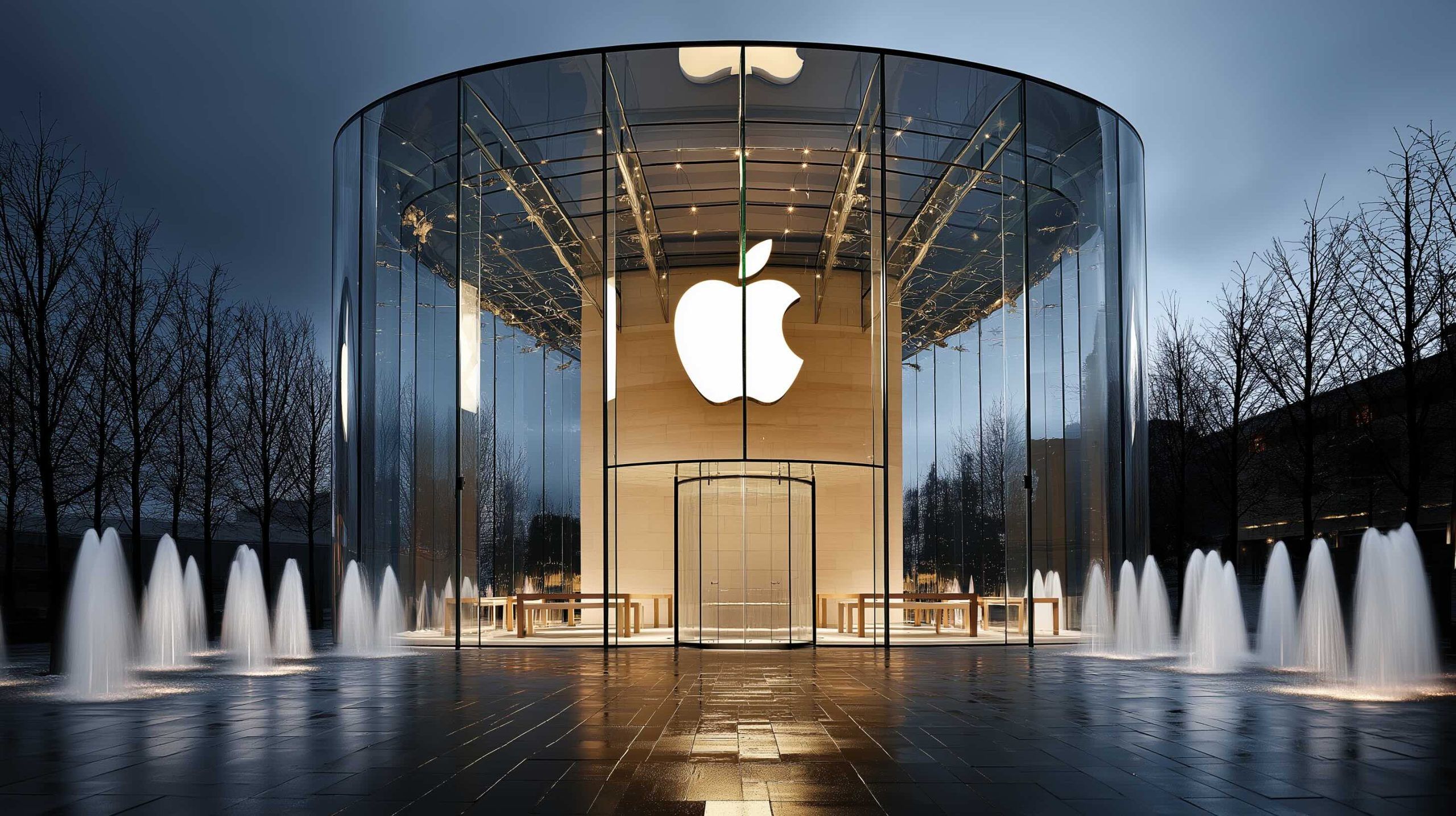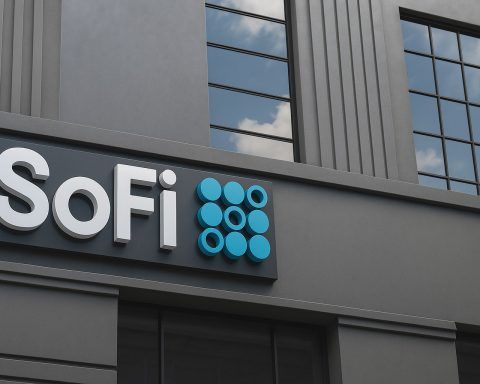November 7, 2025
Apple’s next multi‑billion‑dollar business may not live on a screen. A new Morgan Stanley research note making the rounds today projects that Apple could generate roughly $130–$133 billion in annual revenue from humanoid and home robotics by 2040, putting the category on par with the scale of today’s App Store and ahead of several existing hardware lines. The report—widely cited across financial and tech media—also sketches a likely first step: a tabletop, motorized home hub expected as early as 2027, paving the way for more capable robots later in the 2030s. [1]
Key numbers at a glance
- $130–$133B/year by 2040: Morgan Stanley’s “median case” assumes ~9% global robotics market share for Apple by 2040, translating to about $133B in yearly revenue. A more bullish case envisions market share moving into the low‑20% range and revenue approaching $300B. [2]
- Comparable to today’s App Store: At that scale, Apple’s future robotics business would rival the current App Store/services machine, which AppleInsider pegs at ~$96B in 2024 services revenue—surpassing the Mac (~$29B)on revenue alone. [3]
- Stock impact framing: Separate write‑ups on the note say robotics could reasonably account for 10%–25% of Apple’s current valuation over time if execution lands near the bank’s scenarios. [4]
Why Morgan Stanley thinks Apple can win “embodied AI”
The thesis leans on Apple’s long‑standing advantages—custom silicon, tight hardware‑software integration, and an unparalleled installed base measured in the billions. Apple most recently disclosed a record active device base (Apple hasn’t given a fresh figure this quarter), while independent reporting from January cited more than 2.35 billion active devices worldwide. That distribution power, paired with Apple’s stickiness on services and accessories, makes robotics a natural next platform for the company to extend from screens into the physical world. [5]
Morgan Stanley also frames robotics as the first true expression of “embodied AI” at consumer scale—intelligence paired with motion and manipulation—arguing Apple can apply lessons from projects like Apple Silicon and sensor fusion to deliver reliable, home‑safe machines people will actually trust. [6]
What Apple could ship first: a motorized tabletop hub (2027)
Multiple reports over the past year described Apple’s initial entry as a tabletop robot—think an iPad‑like screen on a motorized neck that can track a user during calls, respond with expressive movement, and act as a smart‑home brain. AppleInsider’s read of the new Morgan Stanley note aligns with that path and places a first product around 2027. Prior coverage from mainstream tech outlets traced the concept to internal work that accelerated after Apple’s car effort wound down. [7]
The idea: start with a limited but delightful, always‑present home assistant that showcases on‑device AI (“Apple Intelligence”), then scale toward more mobile, more capable devices—including humanoid forms—in the 2030s as costs fall and the software matures. [8]
Market context: humanoids are moving from sci‑fi to pilot programs
The robotics boom is bigger than Apple. Warehouse and logistics pilots are expanding, venture funding has surged, and tech giants from Tesla to startups like Agility Robotics are racing to real‑world deployments. Analysts and strategists see humanoids addressing labor shortages over the next decade; at the same time, technologists caution that dexterity, safety, battery life, and cost remain gating factors. Apple’s potential entry lands amid that transition—late enough to avoid early stumbles, early enough to shape mainstream expectations. [9]
How big could this get—and what it would displace
Morgan Stanley’s framing suggests that, by the late 2030s, Apple Robotics could become the company’s second‑largest business after iPhone, eclipsing Mac and iPad and potentially sitting shoulder‑to‑shoulder with the App Store on revenue. In the bank’s aggressive case, the category could approach iPhone‑scale revenue by 2040. While any 15‑year forecast carries uncertainty, the scale under discussion would reshape Apple’s revenue mix and expand its services opportunity (subscriptions, “skills” libraries, maintenance plans) around a new hardware platform. [10]
Why this is plausible for Apple
- Distribution moat: With >2.35B active devices as of early 2025, Apple can seed new categories across an ecosystem that already reaches into homes, cars, and wrists—vital for onboarding and support. [11]
- On‑device AI as the bridge: AppleInsider notes Morgan Stanley expects Apple Intelligence to showcase the perception/reasoning stack that robotics will lean on, a narrative consistent with Apple’s privacy‑first, on‑device approach. [12]
- Methodical platform building: Reports of a tabletop form factor first echo Apple’s standard playbook: ship a narrow, well‑designed product; learn from real use; scale into broader capability as components cheapen and software improves. [13]
The open questions and risks
- Technical hurdles: Humanoid manipulation, reliable autonomy in cluttered homes, safety around people and pets, and cost/weight constraints remain challenging across the industry. Apple’s brand won’t exempt it from physics. [14]
- Pricing and margins: Early units could be expensive relative to perceived utility. Morgan Stanley’s long‑run math assumes major cost deflation across motors, batteries, and compute—assumptions that will take years to validate. (Analyst context, via multiple outlets.) [15]
- Competition: Tesla’s Optimus, plus efforts from Amazon, Samsung, and Chinese manufacturers, will keep the category moving—and pricing honest. Apple will need compelling differentiation in trust, privacy, reliability, and integration. [16]
- Regulatory & social acceptance: Household robots implicate surveillance, data handling, and safety standards. The industry’s next phase will likely be shaped as much by policy and norms as by product demos. [17]
What to watch next
- Signals around a 2027 launch window for the tabletop robot: hiring, supplier leaks, component orders, or manufacturing footprints. Recent reporting has placed related smart‑home and robotic devices in Vietnam‑linked supply chains, another thread to watch. [18]
- Apple Intelligence roadmap: Expect near‑term software updates that showcase multimodal perception and on‑device reasoning, foundational for embodied AI. [19]
- Analyst updates: As peers advance pilots and costs fall, banks will keep revising market models. Today’s $130–$133B number is a scenario, not a guarantee—directionally useful, not destiny. [20]
Bottom line
The Morgan Stanley note is a credible, numbers‑driven marker: if Apple executes, robotics could be its next platform—large enough to sit beside iPhone and Services by the 2040 horizon. In the near term, watch for a delight‑driven tabletop home robot that turns Apple’s AI work into motion and presence. From there, the decade‑long question is whether Apple can do for embodied AI what it once did for smartphones and wearables: make it mainstream, trusted, and indispensable. [21]
Sources cited today (selected)
Coverage of Morgan Stanley’s forecast and Apple’s likely robotics roadmap: AppleInsider (Nov. 6, 2025); Yahoo Finance/AOL (syndicated); GuruFocus summaries of the note; prior reporting on Apple’s tabletop robot and broader humanoid‑robotics context from The Verge, Reuters, and The Washington Post. [22]
Editor’s note: Apple has not officially announced a robotics product. All timelines and revenue figures above reflect analyst scenarios and media reporting as of November 7, 2025.
References
1. finance.yahoo.com, 2. appleinsider.com, 3. appleinsider.com, 4. www.gurufocus.com, 5. www.apple.com, 6. appleinsider.com, 7. appleinsider.com, 8. appleinsider.com, 9. www.washingtonpost.com, 10. appleinsider.com, 11. www.macrumors.com, 12. appleinsider.com, 13. appleinsider.com, 14. www.washingtonpost.com, 15. appleinsider.com, 16. www.reuters.com, 17. www.washingtonpost.com, 18. www.bloomberg.com, 19. appleinsider.com, 20. finance.yahoo.com, 21. appleinsider.com, 22. appleinsider.com





